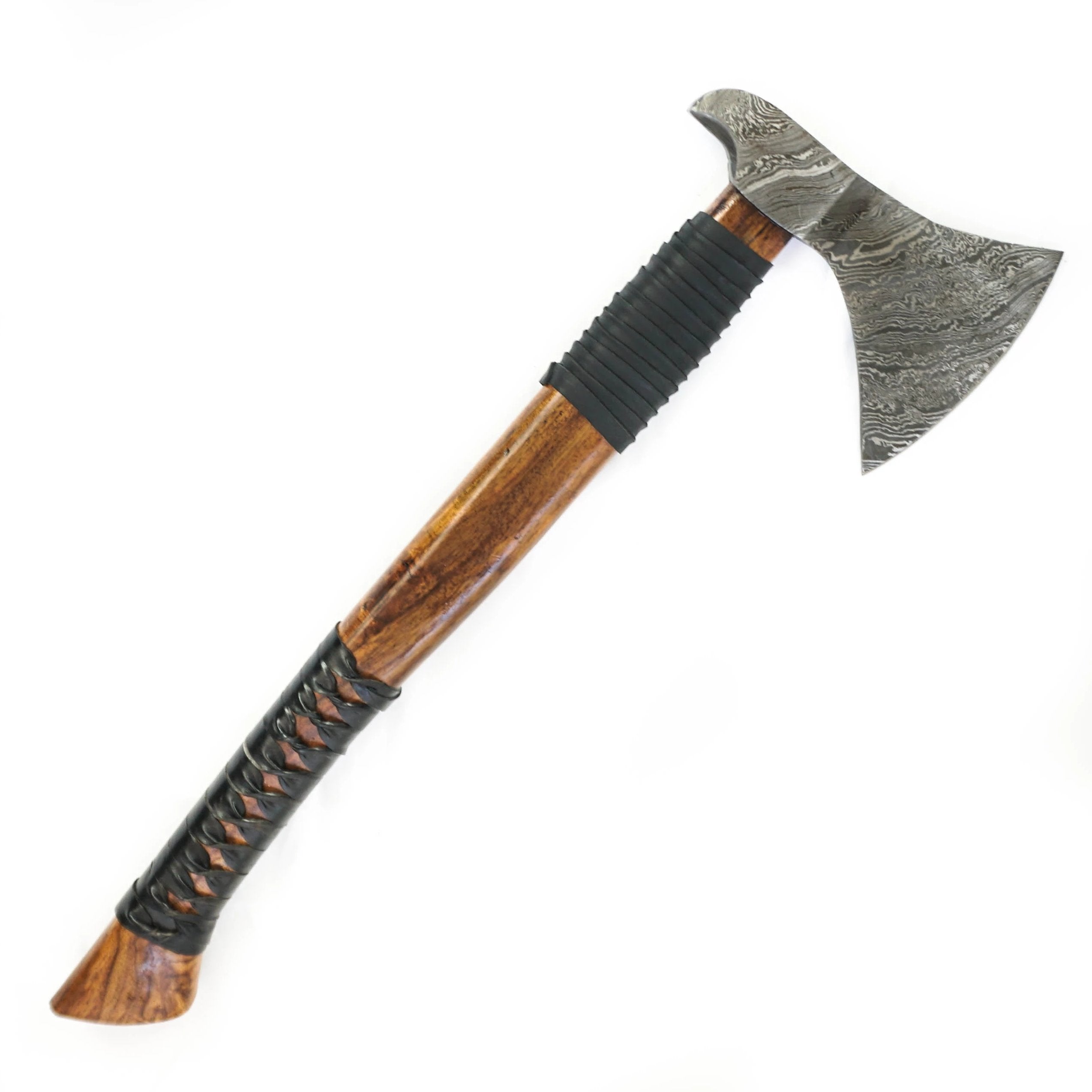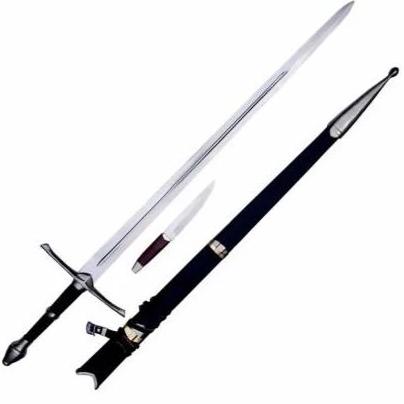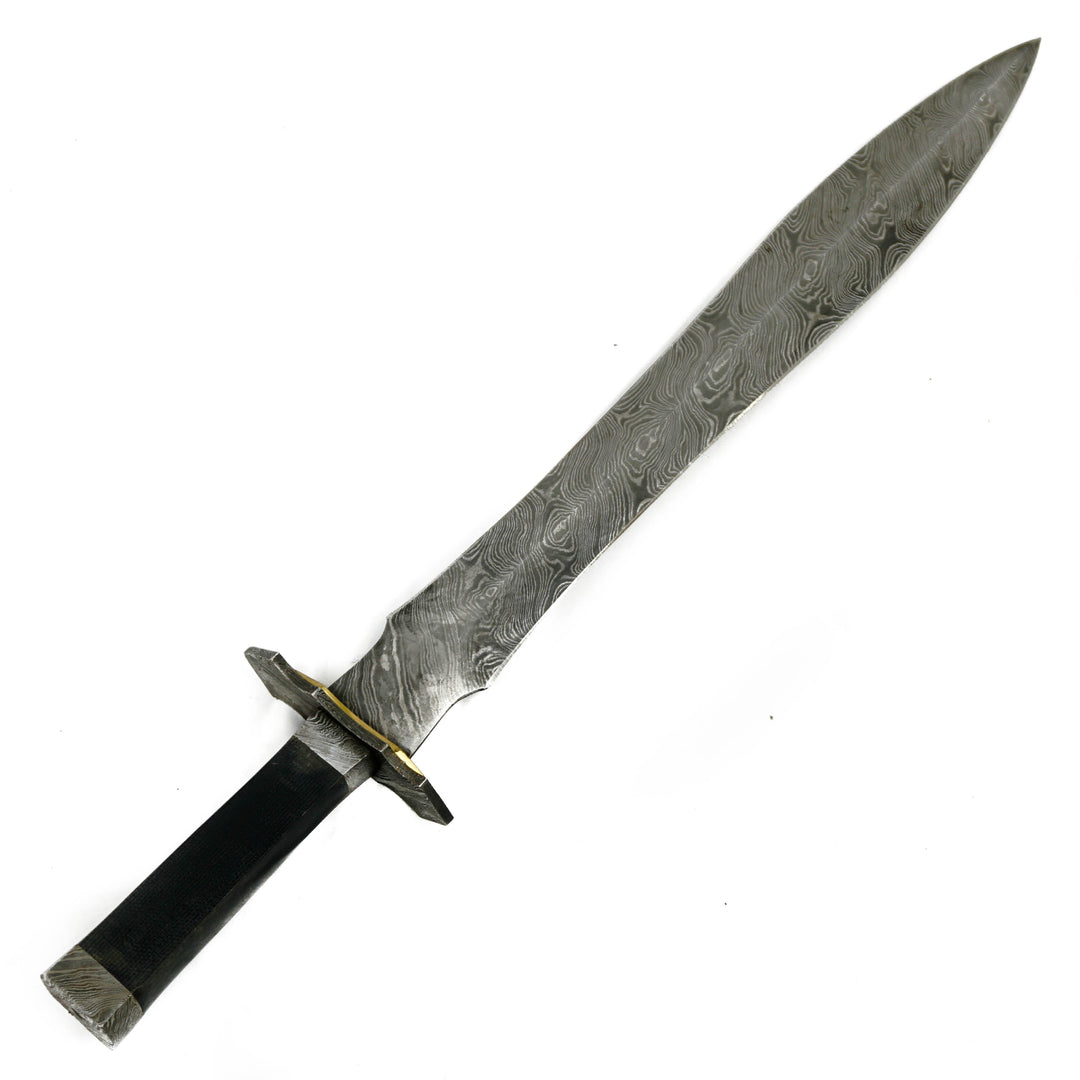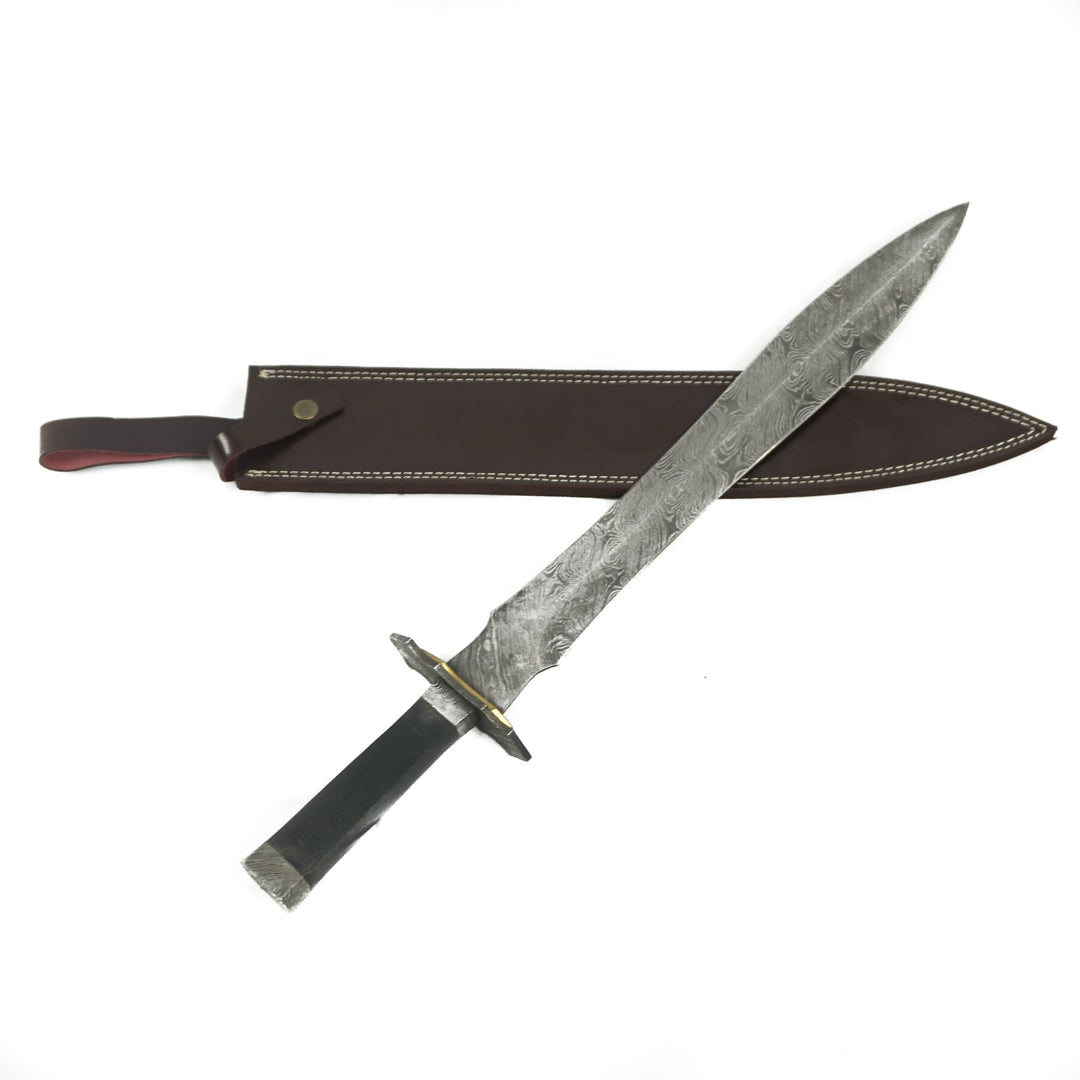Viking Sword Overview
The Viking sword, also recognized as the Viking Age or Ulfberht sword, was a prominent weapon in Western and Northern Europe during the Early Middle Ages. Originating in the 8th century from the Merovingian sword and influenced by the Roman Gladius, it was the weapon of choice for Viking warriors. This single-handed sword, known for its sharp tip and edges, was adept for both slashing and thrusting. It remained popular until the 12th century, eventually transitioning into the Norman and then the knightly swords of the Middle Ages.
Blade Materials
- Type: Made from Pattern welded Damascus steel.
- Composition: Consists of a mix of carbon steel types (#43, #40, and high carbon 1095 steel).
- Craftsmanship: Features 11 pieces of steel, folded five times to create 352 layers, offering an optimal balance of hardness and durability.
- Hardness: The steel achieves a Rockwell hardness rating of 55 to 56 HRC.
- Advantages: This layered construction provides the sword with exceptional edge retention, strength, and flexibility, ideal for enduring powerful blows.
Sword Specifications
- Handle Material: Wood, enhanced with brass bolsters.
- Overall Length: 24 inches.
- Rockwell Hardness: 55-56 HRC.
-
Layering Detail:
- 1st Fold: 22 layers
- 2nd Fold: 44 layers
- 3rd Fold: 88 layers
- 4th Fold: 176 layers
- 5th Fold: 352 layers
- Sheath: Comes with a leather sheath.
- Blade Material: High Carbon Damascus steel.
This Viking sword is not only a symbol of the fearless Norse warriors but also a testament to the advanced metallurgical skills of the Early Middle Ages. Ideal for collectors and enthusiasts who appreciate historical weaponry.



















